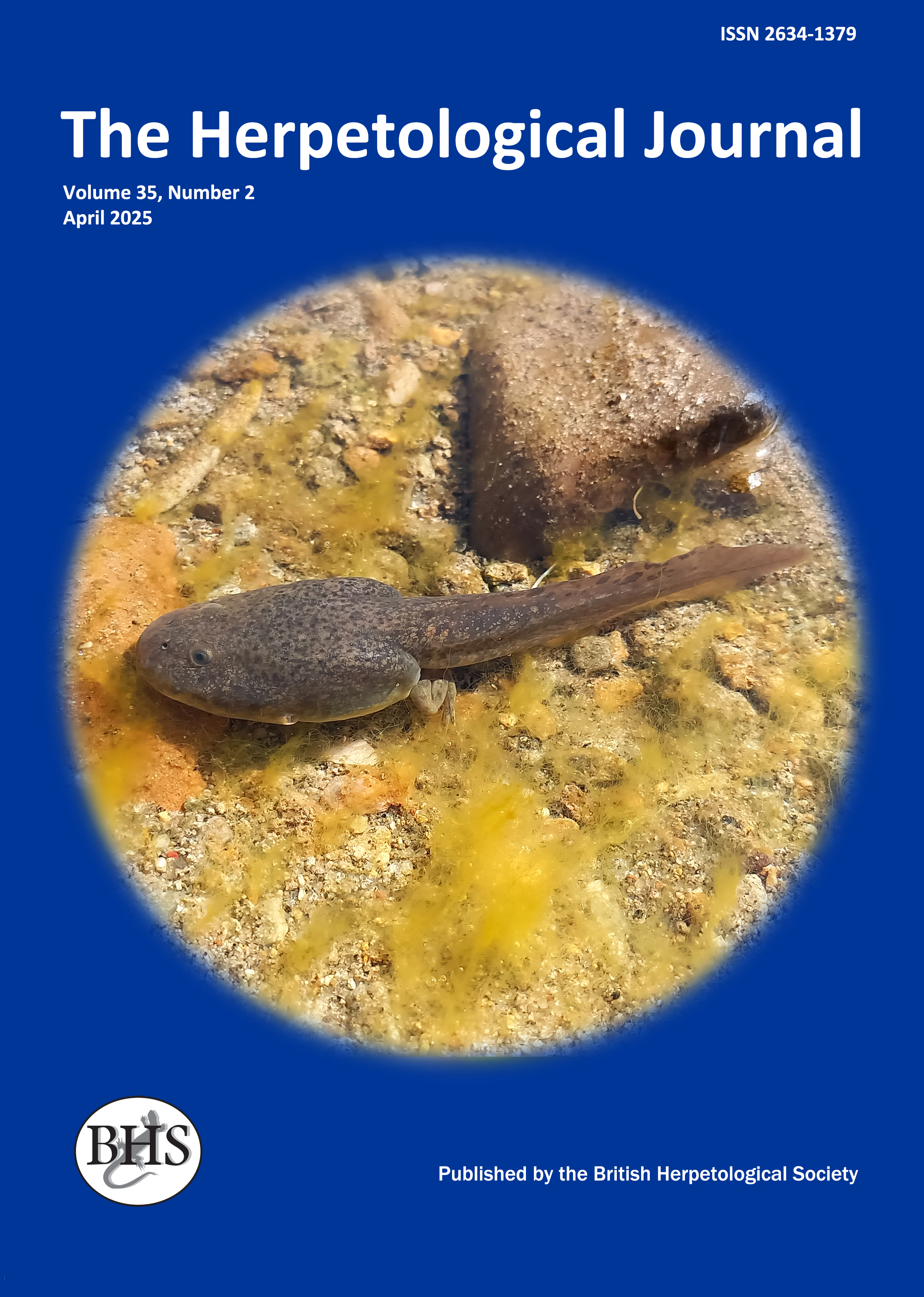
The Herpetological Journal
The Herpetological Journal is the Society's prestigious quarterly scientific journal. Articles are listed in Biological Abstracts, Current Awareness in Biological Sciences,Current Contents, Science Citation Index, and Zoological Record.
ISSN 0268-0130
2021 Impact Factor from Clarivate for the Herpetological Journal is 1.194, an increase of 0.332 from 2020.
pdf 03. Effects of incubation temperature on embryonic development and sex determination in the North African agamid lizard, Agama Impalearis
2036 downloads
Open Access
pp.101-108
Authors: El Hassan El Mouden , Mohammed Znari And Claude Pieau
Abstract: The effects of temperature on incubation time, embryo survival, sex ratio , embryo growth and size at hatching were investigated in the north African Agamid lizard, Agama impalearis. Seven constant temperature treatments (spanning 20-36°C) were employed and a split clutch design was used to assign eggs from the same clutch to the different treatments. Incubation time varied significantly with temperature treatments. Embryos incubated at 32°C, 34°C and 36°C hatched between 41 and 46 days, whereas embryos incubated at 26°C and 28°C hatched at 83 and 67 days respectively. Hatching success was higher at 28°C, 30°C, 32°C and 34°C, but much lower at 26°C and 36°C; hatching did not occur at 20°C. Eggs incubated at 26°C and 36°C produced only females. At 28°C, 30°C, 32°C and 34°C, the percentages of males were 9%, 53. 5%, 32%, and 58% respectively. These sex ratios can be explained by a temperature-dependent mechanism of sex determination. The relative growth rates are highest early in incubation and lower for several days prior to hatching. The relationship between snout-to-vent length and age of embryos seems to be best described by a polynomial fitted regression. Growth rates at 26°C were much lower than those at 34°C. Constant incubation temperatures affected both snout-to-vent length and body mass at hatching, with maximum body size occurring at intermediate constant incubation temperatures (30°C, 32°C and 28°C). According to this study, the optimal temperatures of embryonic development probably lies within the range 28-34 °C. The possible adaptive significance of incubation temperature effects on some life history characteristics of A. impalearis is discussed.
Keywords: incubation temperature, embryonic development, sex determination, Agama

